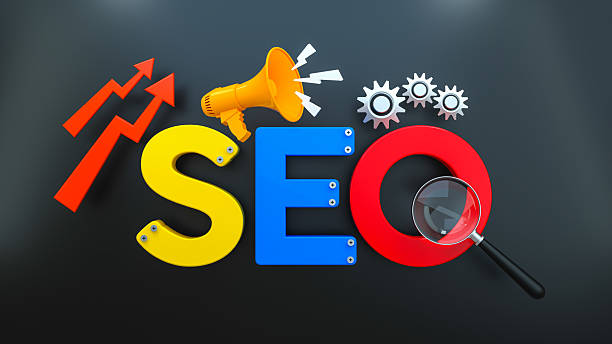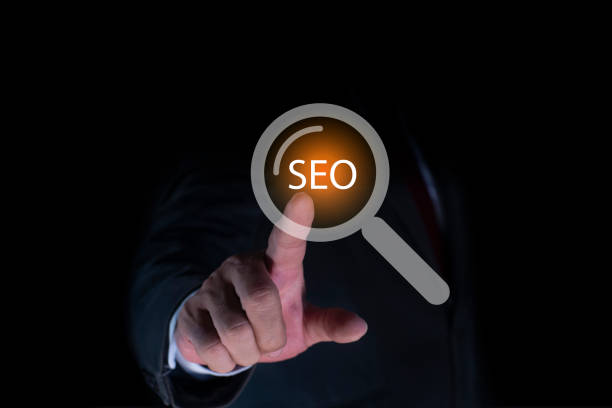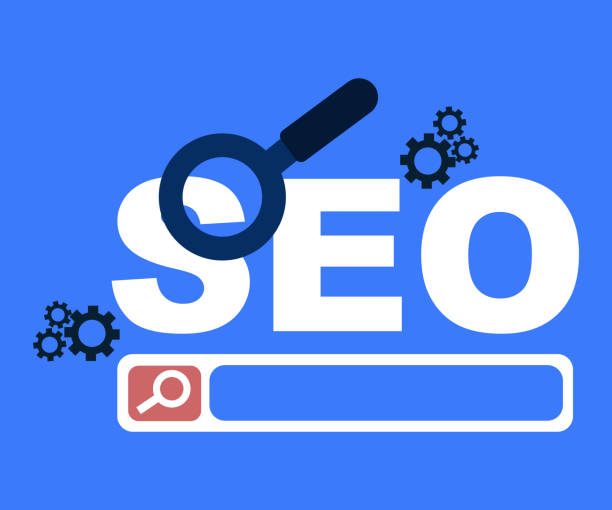Introduction to the Importance of On-Page SEO and its Place in Web Optimization
In today’s competitive internet world, online presence doesn’t merely mean having a website; rather, its visibility among a flood of content is paramount.
On-Page SEO is the cornerstone of any successful optimization strategy and plays a vital role in improving your site’s visibility in search results.
This aspect of search engine optimization focuses on factors that are directly under your control within your website.
In fact, before we delve into backlink building or off-page SEO, we must ensure that the internal foundation of our site is properly laid.
#SEO_Introduction #Site_Optimization #Online_Success
On-page optimization is not just about using keywords; it encompasses a complex set of best practices to help search engines better understand your content.
This process ranges from optimizing titles and meta descriptions to URL structure and internal linking.
In this educational article, we aim to comprehensively and fully examine various aspects of on-page SEO so that you can significantly increase your organic site traffic using these guidelines.
Understanding these principles is crucial, as without proper on-page optimization groundwork, your efforts in other SEO areas might be futile.
We are here to provide an explanatory, step-by-step approach and accompany you on this journey.
Does your current website build the trust potential customers should have in your business? If the answer is no, it’s time to get your professional and influential corporate website with RasaWeb.
✅ Fully customized design tailored to your brand identity
✅ Increased lead generation and business credibility in the eyes of customers⚡ Contact us for a free consultation!
Keywords and Content: The Beating Heart of On-Page Optimization
Content is king, and keywords determine its throne.
In an on-page SEO strategy, the correct selection and use of keywords play a pivotal role.
These keywords are the bridge between user searches and your content.
First, you need to conduct thorough keyword research to find phrases that are not only relevant to your field of activity but also have a suitable search volume and reasonable competition.
Then, you should naturally incorporate these keywords into your content, including in the main title, subheadings, paragraphs, and even in image names.
Content quality is also of high importance.
Search engines aim to provide the best answers to their users, so your content must be original, valuable, and comprehensive.
Duplicate or low-value content not only won’t help your ranking but can also harm it.
To enhance site optimization, you can use analytical and specialized content that answers user questions and provides in-depth information.
Engaging content can also help increase user interaction and send positive signals to search engines.
Remember that the main goal is to create content that is not only understandable for Google bots but also appealing and useful for human users.
This dual approach is the key to success in optimizing content for on-page SEO.
Optimizing On-Page Elements: The Key to Increased Visibility
On-Page elements are parts of your website that can be directly optimized to improve on-page SEO.
This includes the page title (Title Tag), meta description (Meta Description), heading tags (H1-H6), and friendly URLs.
The page title is the most important on-page element, not only telling search engines what the page is about but also being the first thing users see in search results.
It should include the main keyword and be appealing and encouraging for clicks.
The meta description is a short, engaging summary of the page’s content which, although not directly affecting rankings, can significantly increase the click-through rate (CTR).
Heading tags (H1, H2, H3, etc.) help organize content and improve readability.
Logical use of keywords in these tags is also recommended.
Finally, short, meaningful, and keyword-rich URLs are not only more understandable for users but also help search engines understand the page’s structure and content.
All these actions, in harmony, help increase the effectiveness of your site’s on-page optimization.
For better understanding, the table below shows the importance and placement of each element:
Click here to preview your posts with PRO themes ››
| On-Page Element | Importance for SEO | Brief Description |
|---|---|---|
| Title Tag | High | First thing seen in search results. Includes main keyword. |
| Meta Description | Medium (impact on CTR) | An engaging summary to encourage clicks. |
| Header Tags (H1-H6) | Medium (impact on structure and readability) | Organizes content and improves readability. |
| URL Structure | Medium (impact on search engine understanding) | Short, meaningful, and includes keyword. |
Content Strategy and its Role in Improving On-Page SEO
A strong content strategy is the backbone of any successful on-page SEO effort.
Simply producing content is not enough; content must be created with a clear purpose that both meets user needs and advances your business goals.
Researching User Intent is of paramount importance.
You need to understand why your users are searching and what kind of information they want to find.
Your content should cover these needs in the best possible way.
Variety in content types can also help improve on-page optimization.
In addition to text articles, using videos, infographics, podcasts, and even interactive tools can increase your site’s appeal and extend user dwell time.
These signals are positive for search engines and indicate the quality and value of your content.
For example, a news-based content in a specific field can quickly attract traffic, while a explanatory and in-depth article remains valuable for a longer period.
The ultimate goal is for every piece of content, whether entertaining or simply guidance, to help increase your credibility and ranking in search results.
Always remember that content should be written for humans, not just for bots, so you can achieve maximum efficiency through on-page site optimization.
Are you frustrated with the low conversion rate of your online store?
RasaWeb, with professional e-commerce website design, is your definitive solution!
✅ Increase your sales and revenue
✅ Unparalleled user experience for your customers
⚡ Get a free consultation now!
Technical Aspects of On-Page SEO: Site Structure and Speed
Beyond content, the technical aspects of your website play a key role in the success of on-page SEO.
Site structure, including information architecture and internal linking, must be designed to make content navigation and understanding easy for both users and search engines.
A logical hierarchical structure using relevant internal links helps search engines better crawl and index your pages.
Furthermore, proper internal linking helps distribute “authority” or “credibility” throughout the site and makes deeper pages accessible.
Site loading speed is also a very important factor in on-page optimization and user experience (UX).
Today’s users expect web pages to load in a fraction of a second, and search engines prioritize faster sites.
Tools like Google PageSpeed Insights can help you identify site speed issues.
Optimizing images, compressing CSS and JavaScript files, using caching, and choosing suitable hosting are all actions that can help improve site speed and, consequently, enhance your web optimization.
Don’t forget that a faster site provides a better user experience, which itself is a positive signal for search engines.
Optimizing Images and Multimedia Files for On-Page SEO
Images and other multimedia files like videos not only add visual appeal to your content but can also provide new opportunities for improving on-page SEO.
Optimizing images means using appropriate formats (like WebP for images), compressing them to reduce size without losing quality, and correctly using the Alt tag.
The Alt tag is an alternative text for an image that is displayed if the image fails to load, and more importantly, it helps search engines understand the image content.
Including relevant keywords in the Alt tag can help rank your images in Google Image Search.
In addition to images, video optimization is also important.
Using transcripts for videos, adding appropriate titles and descriptions including keywords, and hosting videos on suitable platforms like YouTube or Aparat (with links to your site) can help with on-page site optimization.
These actions not only make your multimedia content more understandable for search engines but also improve the user experience.
A complete explanation regarding media optimization can direct significant traffic from image and video searches to your site.
Remember that every element on the page is an opportunity to improve web optimization and increase your site’s visibility.
Click here to preview your posts with PRO themes ››
User Experience (UX) and Its Connection to On-Page Optimization
Today, User Experience (UX) has become one of the most important factors in search engine rankings.
Google and other engines seek to provide the best experience to their users, so websites with poor user experience usually rank lower.
UX factors such as Core Web Vitals (including loading speed, interactivity, and visual stability), Bounce Rate, Dwell Time, and Mobile-Friendliness all impact on-page SEO.
A website with a Responsive Design that displays well on various devices (mobile, tablet, desktop) is preferred by search engines.
Easy and intuitive navigation, high readability (using appropriate fonts and sufficient line spacing), and the absence of intrusive pop-ups all contribute to improving UX and, consequently, on-page optimization.
This is a specialized topic that requires attention to technical and design details.
An engaging and frictionless user experience not only keeps users satisfied but also sends positive signals to search engines that your content is valuable and appealing.
Ultimately, focusing on UX means investing in your site’s long-term success in terms of on-page site optimization.
The table below shows some key UX factors and their impact on SEO:
| UX Factor | Impact on On-Page SEO | How to Improve |
|---|---|---|
| Page Loading Speed | Increased ranking, reduced bounce rate | Image optimization, code compression, using CDN |
| Mobile-Friendliness | Essential for mobile ranking, better user experience | Responsive design, testing with Google Mobile-Friendly Test |
| Easy Navigation Structure | Aids search engine crawling, increases dwell time | Clear menus, breadcrumbs, logical internal linking |
| Content Readability | Reduced bounce rate, increased dwell time | Using short paragraphs, subheadings, lists, readable fonts |
Measuring and Analyzing On-Page SEO Performance
Success in on-page SEO is not limited to implementing tactics; it requires continuous measurement and precise performance analysis.
Without data, you cannot know which strategies have been effective and which need optimization.
Tools like Google Analytics and Google Search Console are vital resources for gathering information about your website’s performance in search results.
Using Google Analytics, you can monitor organic traffic, bounce rate, dwell time, popular pages, and user navigation paths.
Google Search Console also provides valuable information about the keywords users used to find your site, crawl errors, page indexing status, and mobile site performance.
This data allows you to have a precise analytical approach and make informed decisions to improve your site’s on-page optimization.
For example, if you notice a high bounce rate on a specific page, you can review its content or improve the user experience.
This continuous feedback loop is the key to sustainable success in on-page SEO and helps you always maintain an up-to-date and responsive approach to algorithm changes.
Does your current website convert visitors into customers or drive them away? Solve this problem forever with professional corporate website design by RasaWeb!
✅ Build credibility and strong branding
✅ Attract target customers and increase sales
⚡ Get a free consultation now!
Common Mistakes in On-Page Optimization and Ways to Avoid Them
Even with the best intentions, mistakes can occur in implementing on-page SEO that can harm your site’s ranking instead of improving it.
One of the most common mistakes is keyword stuffing.
This not only results in penalties from search engines but also severely degrades the user experience.
Instead, use keywords naturally within smooth and high-quality text.
Another mistake is neglecting site speed and mobile-friendliness, as previously mentioned.
Also, incorrect use of heading tags, irregular and meaningless URLs, and weak internal linking can harm web optimization.
Duplicate Content is also a serious problem that can lead to confusion for search engines; therefore, avoid producing identical content on different pages or use canonical tags to point to the original version.
This educational section is designed to increase your awareness of common pitfalls in on-page site optimization.
Utilize these guidelines to avoid these mistakes and ensure the success of your on-page SEO strategy, leveraging your site’s full potential.
Future Trends in On-Page Optimization and the Importance of Staying Up-to-Date
The world of SEO is constantly changing, and on-page SEO is no exception.
Search engine algorithms are continuously evolving with the goal of providing the best user experience.
One important trend is the increased focus on E-A-T (Expertise, Authoritativeness, Trustworthiness).
This means your content should be produced by experts, reference credible sources, and generally be trustworthy.
Click here to preview your posts with PRO themes ››
Voice search, image search, and the increasing importance of Artificial Intelligence in understanding content and user intent are other significant trends.
Optimizing for on-page SEO in the age of AI means producing content that not only contains keywords but also answers complex user questions and provides real added value.
An analytical and predictive approach to these changes can keep you one step ahead of the competition.
Always strive to stay informed about the latest developments in on-page site optimization and update your strategies accordingly.
This explanatory and comprehensive article is an effort to provide you with the necessary knowledge on this complex and dynamic path.
Frequently Asked Questions
| No. | Question | Answer |
|---|---|---|
| 1 | What is On-Page SEO? | On-page SEO refers to a set of actions performed within a website to optimize its pages to achieve better rankings in search results. |
| 2 | What is the most important factor in On-Page SEO? | High-quality, relevant, and comprehensive content that addresses user needs is the most important factor in on-page SEO. |
| 3 | What role does the Title Tag play in On-Page SEO? | The Title Tag is one of the most important factors that tells search engines and users what the page content is about. It should include the main keyword and be engaging. |
| 4 | How important is the Meta Description tag? | Although it doesn’t directly affect rankings, it is very effective on the Click-Through Rate (CTR) in search results and encourages users to visit the page. |
| 5 | How is image optimization done in On-Page SEO? | By using an appropriate alt tag, compressing image size to increase loading speed, and meaningfully naming the image file. |
| 6 | What is the importance of using headings (H1, H2, H3) in On-Page SEO? | Headings help structure content, increase readability, and assist search engines in understanding the hierarchy and sub-topics of the content. |
| 7 | What is Internal Linking and what are its benefits? | Internal linking means creating links between different pages of a website. This helps distribute authority, improve user navigation, and assist search engine crawling. |
| 8 | Where should the Focus Keyword be placed on the page? | The main keyword should be placed in the title tag, meta description, H1, first paragraph, and naturally throughout the text, and if possible, in the URL. |
| 9 | What effect does duplicate content have on On-Page SEO? | Duplicate content can harm a site’s ranking and confuse search engines as to which version is original, potentially identifying it as spam. |
| 10 | How important is page loading speed in On-Page SEO? | Page loading speed is an important ranking factor and directly affects user experience. Slow pages lead to an increased bounce rate for users. |
And other services of RasaWeb Advertising Agency in the field of advertising
Smart Reportage: A professional solution for analyzing customer behavior with a focus on intelligent data analysis.
Smart Social Media: A professional solution for customer acquisition with a focus on customizing user experience.
Smart Conversion Rate Optimization: An effective tool for improving SEO rankings by optimizing key pages.
Smart Advertising Campaign: An effective tool for increasing sales with the help of custom programming.
Smart Data Analysis: Professional optimization for user interaction using attractive UI design.
And over a hundred other services in the field of internet advertising, advertising consultation, and organizational solutions
Internet Advertising | Advertising Strategy | Advertorials
Resources
Comprehensive On-Page SEO GuideOn-Page SEO TechniquesWebsite Internal OptimizationAdvanced On-Page SEO
? RasaWeb Afarin Digital Marketing Agency, your comprehensive solution for growth and visibility in the online space. Elevate your business with our specialized services, including multilingual website design.
📍 Tehran, Mirdamad Street, Next to Central Bank, Southern Kazeroun Alley, Ramin Alley, No. 6













